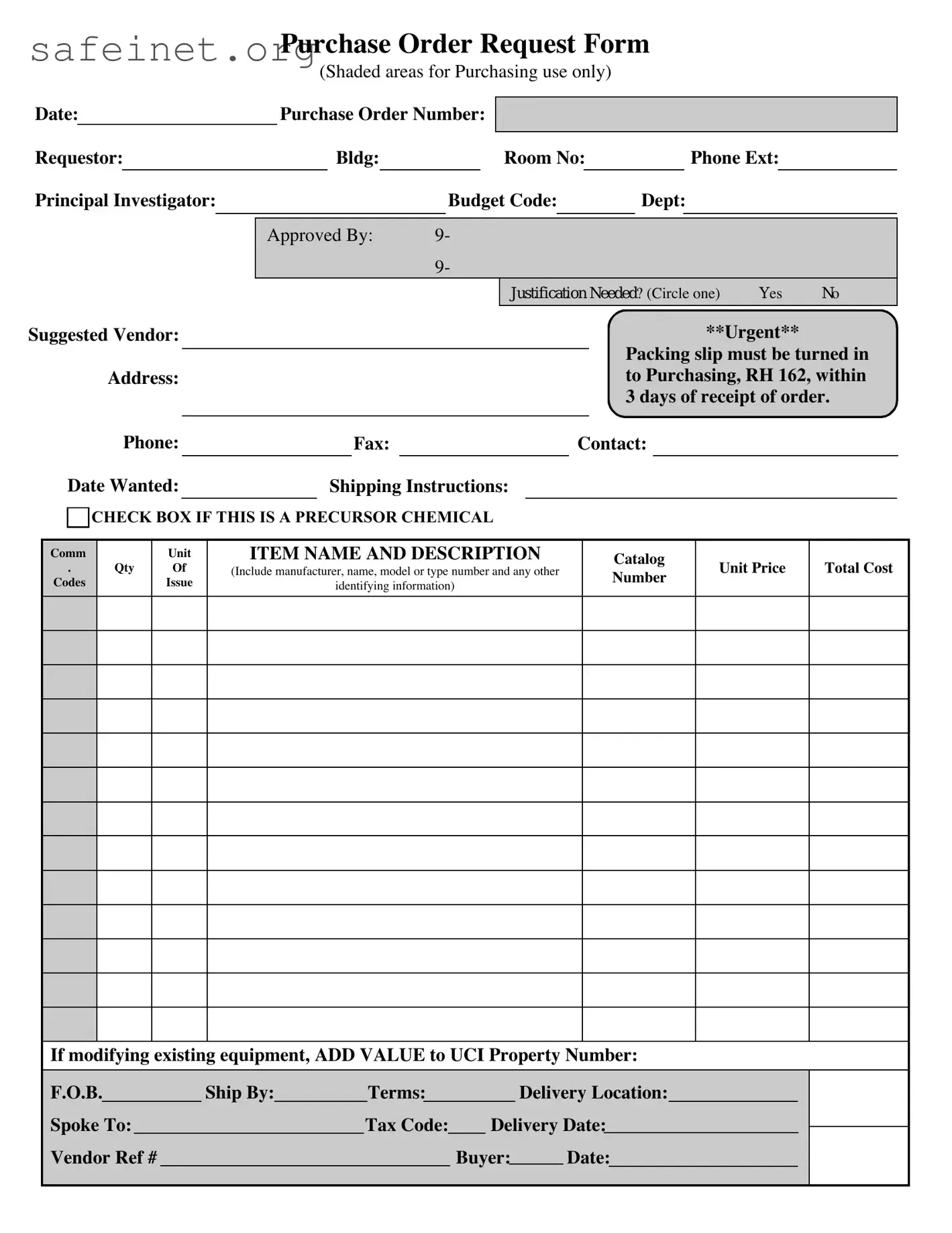What is a Purchase Order (PO) form?
A Purchase Order (PO) form is a document that a buyer sends to a seller, indicating the items they wish to purchase, along with quantities and agreed prices. This form serves as a legally binding contract once the seller accepts it. It also helps in streamlining the ordering process and ensures that both parties have a clear record of the transaction.
Why is a Purchase Order important?
The Purchase Order is crucial for several reasons. It provides a clear outline of what is being ordered, minimizing misunderstandings. It establishes the terms of the transaction and can also serve as a budgeting tool, helping businesses manage their finances. Furthermore, having a formal PO can simplify the invoice and payment processes, as it creates an audit trail that can be referenced later.
How do I fill out a Purchase Order form?
Filling out a Purchase Order form generally involves providing essential information. Start by including your company’s details, like the name and address, followed by the supplier’s information. List each item being ordered, specifying the description, quantity, and price. Be sure to include any specific terms or conditions relevant to your order. Lastly, make sure to sign and date the PO before sending it to the supplier.
What happens after I send a Purchase Order?
Once you send a Purchase Order, the supplier reviews the request. They may accept, reject, or suggest changes to the order. If they agree to the terms, they will often send back an acknowledgment or confirmation. This completes the initial contracting stage. It is important to keep a record of this confirmation as it serves as the basis for future communications related to that order.
Can a Purchase Order be modified after it's sent?
Yes, a Purchase Order can be modified after it has been sent, but this usually requires communication and agreement from both parties. If modifications are necessary, the buyer should reach out to the seller to discuss the changes. Typically, a revised PO or an addendum will be issued to reflect any new terms, ensuring both parties remain on the same page.
How does a Purchase Order relate to invoicing?
A Purchase Order and an invoice are closely related but serve different functions. The PO is issued before goods or services are provided, while an invoice is generated after. When the supplier delivers the goods or services, they send an invoice referencing the original PO number. This connection helps streamline the payment process and serves as a check against what was ordered versus what was delivered.
What should I do if there is a discrepancy with my Purchase Order?
If a discrepancy arises, it is important to address it promptly. First, double-check the PO, invoice, and any communications with the supplier to identify the source of the issue. Then, reach out to the supplier to discuss the discrepancy. Open communication can often resolve mistakes quickly, whether it's an error in quantity, pricing, or any terms outlined in the original order.

